Abarth 500 595 695 vs Renault Kangoo Compact Van – Performance, range & efficiency compared
Everyday use, family trips or long-distance drives – here’s where the differences show.
Discover whether Abarth 500 595 695 or Renault Kangoo Compact Van fits your lifestyle better.
Costs and Efficiency:
Looking at overall running costs, both models reveal some interesting differences in everyday economy.
Renault Kangoo Compact Van has a decisively advantage in terms of price – it starts at 22400 £, while the Abarth 500 595 695 costs 32600 £. That’s a price difference of around 10122 £.
In terms of energy consumption, the advantage goes to the Abarth 500 595 695: with 17.10 kWh per 100 km, it’s slight more efficient than the Renault Kangoo Compact Van with 18.70 kWh. That’s a difference of about 1.60 kWh.
As for range, the Renault Kangoo Compact Van performs minimal better – achieving up to 290 km, about 25 km more than the Abarth 500 595 695.
Engine and Performance:
Power, torque and acceleration are the classic benchmarks for car enthusiasts – and here, some clear differences start to show.
When it comes to engine power, the Abarth 500 595 695 has a noticeable edge – offering 155 HP compared to 122 HP. That’s roughly 33 HP more horsepower.
In acceleration from 0 to 100 km/h, the Abarth 500 595 695 is convincingly quicker – completing the sprint in 7 s, while the Renault Kangoo Compact Van takes 11.60 s. That’s about 4.60 s faster.
In terms of top speed, the Renault Kangoo Compact Van performs slightly better – reaching 176 km/h, while the Abarth 500 595 695 tops out at 155 km/h. The difference is around 21 km/h.
There’s also a difference in torque: Renault Kangoo Compact Van pulls somewhat stronger with 270 Nm compared to 235 Nm. That’s about 35 Nm difference.
Space and Everyday Use:
Cabin size, boot volume and payload all play a role in everyday practicality. Here, comfort and flexibility make the difference.
Seats: Renault Kangoo Compact Van offers somewhat more seating capacity – 5 vs 4.
In curb weight, Abarth 500 595 695 is hardly perceptible lighter – 1410 kg compared to 1493 kg. The difference is around 83 kg.
In maximum load capacity, the Renault Kangoo Compact Van performs decisively better – up to 4900 L, which is about 4350 L more than the Abarth 500 595 695.
When it comes to payload, Renault Kangoo Compact Van significantly takes the win – 901 kg compared to 385 kg. That’s a difference of about 516 kg.
Who comes out on top?
Overall, the Renault Kangoo Compact Van shows itself to be outperforms in nearly all aspects and secures the title of DriveDuel Champion.
It convinces with the more balanced overall package and proves to be the more versatile choice for everyday use.
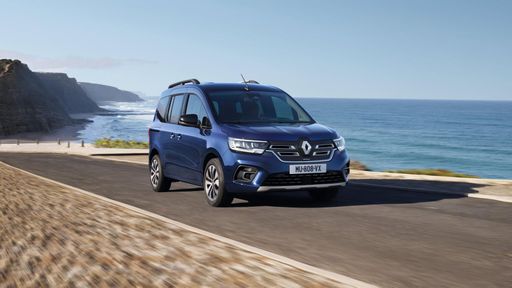 @ Renault Group Media
@ Renault Group Media
Renault Kangoo Compact Van
Abarth 500 595 695
The Abarth 500, particularly in its 595 and 695 renditions, captures the spirit of Italian motoring with its compact yet aggressive design. Known for its lively performance and distinctive styling, this little powerhouse is a joy to drive, offering an engaging experience that appeals to enthusiasts. With its rich motorsport heritage, the Abarth 500 embodies the essence of fun and excitement on both the streets and the race track.
details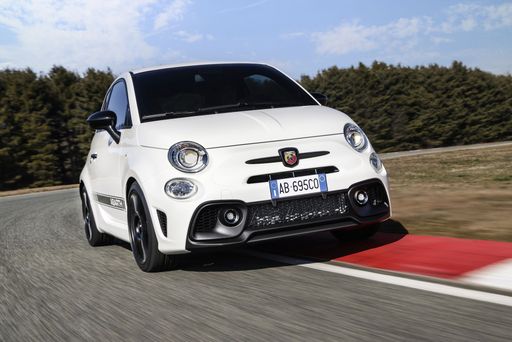 @ Abarth / Stellantis Media
@ Abarth / Stellantis Media
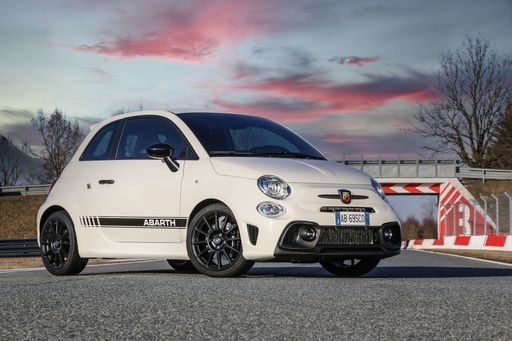 @ Abarth / Stellantis Media
@ Abarth / Stellantis Media
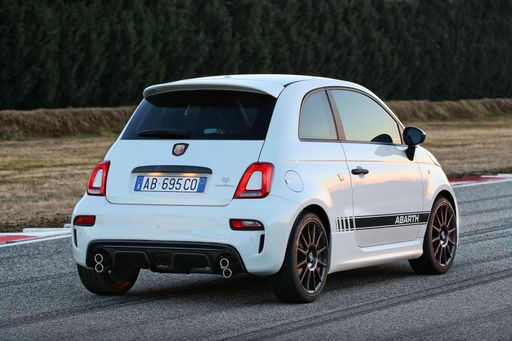 @ Abarth / Stellantis Media
@ Abarth / Stellantis Media
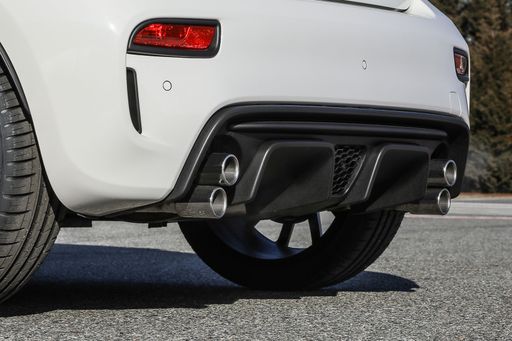 @ Abarth / Stellantis Media
@ Abarth / Stellantis Media
 @ Abarth / Stellantis Media
@ Abarth / Stellantis Media
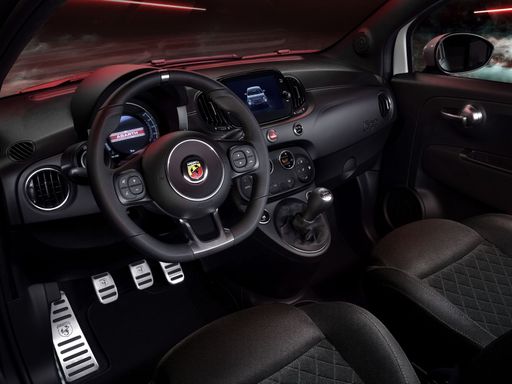 @ Abarth / Stellantis Media
@ Abarth / Stellantis Media
Renault Kangoo Compact Van
The Renault Kangoo is a versatile small van that seamlessly blends practicality with modern design. It offers a spacious interior, making it ideal for transporting goods or passengers while maintaining a compact exterior for easy manoeuvrability in urban settings. Equipped with efficient engines, the Kangoo balances performance with economy, catering to the diverse needs of businesses and individual users alike.
details @ Renault Group Media
@ Renault Group Media
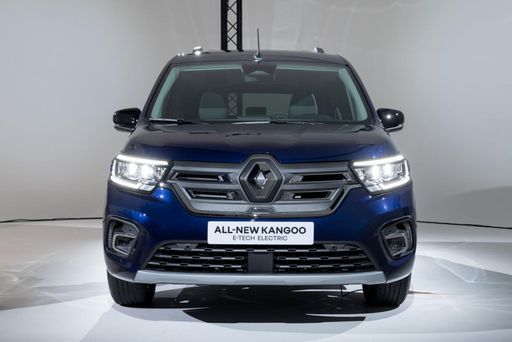 @ Renault Group Media
@ Renault Group Media
 @ Renault Group Media
@ Renault Group Media
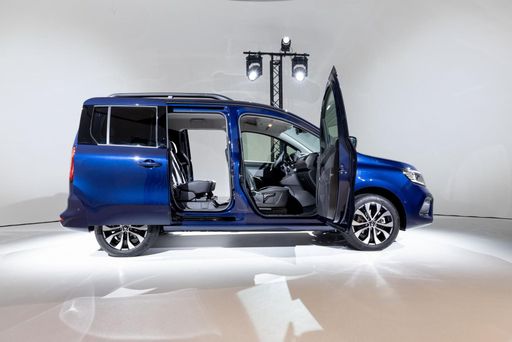 @ Renault Group Media
@ Renault Group Media
 @ Renault Group Media
@ Renault Group Media
 @ Renault Group Media
@ Renault Group Media
 @ Abarth / Stellantis Media
@ Abarth / Stellantis Media
|
 @ Renault Group Media
@ Renault Group Media
|
|
|
|
Costs and Consumption |
|
|---|---|
|
Price
32600 - 39400 £
|
Price
22400 - 37000 £
|
|
Consumption L/100km
-
|
Consumption L/100km
5.1 - 5.5 L
|
|
Consumption kWh/100km
17.1 - 18.8 kWh
|
Consumption kWh/100km
18.7 - 21.1 kWh
|
|
Electric Range
242 - 265 km
|
Electric Range
261 - 290 km
|
|
Battery Capacity
37.80 kWh
|
Battery Capacity
-
|
|
co2
0 g/km
|
co2
0 - 151 g/km
|
|
Fuel tank capacity
-
|
Fuel tank capacity
54 L
|
Dimensions and Body |
|
|---|---|
|
Body Type
Hatchback
|
Body Type
Cargo Van
|
|
Seats
4
|
Seats
2 - 5
|
|
Doors
3
|
Doors
4 - 5
|
|
Curb weight
1410 - 1435 kg
|
Curb weight
1493 - 1910 kg
|
|
Trunk capacity
185 L
|
Trunk capacity
-
|
|
Length
3673 mm
|
Length
4486 - 4910 mm
|
|
Width
1682 mm
|
Width
1860 mm
|
|
Height
1518 mm
|
Height
1854 - 1864 mm
|
|
Max trunk capacity
550 L
|
Max trunk capacity
3000 - 4900 L
|
|
Payload
370 - 385 kg
|
Payload
498 - 901 kg
|
Engine and Performance |
|
|---|---|
|
Engine Type
Electric
|
Engine Type
Diesel, Electric
|
|
Transmission
Automatic
|
Transmission
Manuel, Automatic
|
|
Transmission Detail
-
|
Transmission Detail
Manual Gearbox, Dual-Clutch Automatic, Reduction Gearbox
|
|
Drive Type
Front-Wheel Drive
|
Drive Type
Front-Wheel Drive
|
|
Power HP
155 HP
|
Power HP
75 - 122 HP
|
|
Acceleration 0-100km/h
7 s
|
Acceleration 0-100km/h
11.6 - 18.9 s
|
|
Max Speed
155 km/h
|
Max Speed
132 - 176 km/h
|
|
Torque
235 Nm
|
Torque
230 - 270 Nm
|
|
Number of Cylinders
-
|
Number of Cylinders
4
|
|
Power kW
114 kW
|
Power kW
55 - 90 kW
|
|
Engine capacity
-
|
Engine capacity
1461 cm3
|
General |
|
|---|---|
|
Model Year
2023
|
Model Year
2022 - 2024
|
|
CO2 Efficiency Class
A
|
CO2 Efficiency Class
D, E, A
|
|
Brand
Abarth
|
Brand
Renault
|
Is the Abarth 500 595 695 offered with different drivetrains?
The Abarth 500 595 695 is offered with Front-Wheel Drive.
The prices and data displayed are estimates based on German list prices and may vary by country. This information is not legally binding.
